- January 10, 2025
-
-
Loading

Loading

For more than 100 years, the town of Oakland basically was defined by 10 square blocks — an area now considered historic Oakland. By 1995, new subdivisions started sprouting up, the first of which was Oakland Pointe.
Some of these developers continued the tradition of naming streets for the town’s pioneers, elected officials and influential residents.
The Boney Subdivision, also known as Oakland Heights, is considered the area of Henschen and Gulley avenues east of Starr Street. Robert “Bob” Boney owned a large portion of it and raised cattle on the pastureland.
Two “roads” between Gulley and Henschen were at one time named Winters Street and Smith Street, but Smith is no longer in existence and Winters is used as a golf-cart path.
Boney eventually sold the land, and it was developed as the Winters Landing subdivision.
North of Winters Landing is Macchi Avenue.
South of Oakland Avenue, the extension of Winters Landing Drive will become Motamassek Road, a new two-lane paved road that will provide another north-south connector from Oakland Avenue to West Colonial Drive.
West of Starr is the Southern Oaks community, and the developer named its three streets — Millholland, Demens and Vandermeer — for former residents. In Oakland Shores, Mather-Smith Drive and Edgegrove Lane were named for a prominent family.
Ryan Court, off Tubb Street, was developed by Bill Hartsfield and reportedly named for his grandson.
One family is honored multiple times in the town. There is Hull Avenue, previously Seventh Avenue, in the heart of Oakland; several streets on the west end of the town, Hull Island Drive and Simeon Road; a community, Hull Island, and a new development under construction, Hull Island Estates.
Oakland officials have approved two more names to be applied to future streets: Boss Hewett and Dennis Foltz.
WINTERS STREET — Dora Good Winter was a longtime resident of Oakland who worked for many years as a secretary and bookkeeper in the citrus industry. Her second husband, Ken, owned an orange grove — at one time, the oldest in the area — on land now occupied by the Winters Landing subdivision. After a severe freeze, he sold it to a developer, so the developer gave the community and a street their name. Dora was an active member of Oakland Presbyterian Church for nearly 50 years.
SMITH STREET — Robert Fulton “Buck” Smith was one of 31 qualified voters living within the proposed corporate limits who gathered Nov. 1, 1887, for a meeting of incorporation. He and his wife, Edmonia, followed Peter Demens to Oakland with the Orange Belt Railway. Smith, a railroad engineer, drove the first train into Oakland in November 1886. He gave up railroad work after injuring his back and opened a blacksmith shop behind his house, previously the home constructed for Demens by the railroad company. Both Robert Fulton and his son, Robert L., lived in the home, and both served as Oakland mayors. Robert L.'s daughter, Doris, was married to Dave Starr.
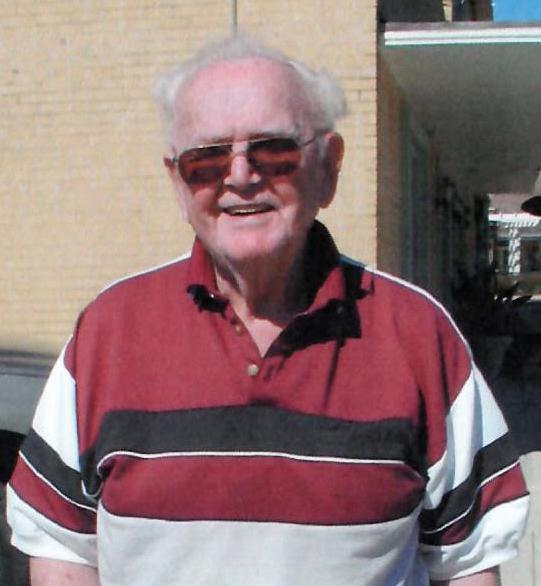
MACCHI AVENUE – Robert “Bob” Macchi was a corporal who served in Europe during the war. He married Betty “Jean” Sadler, the great-granddaughter of Oakland pioneer James Hardy Sadler. The Macchis were in the citrus business and were active in the town. He was an elder in the Oakland Presbyterian Church and a civic leader. At one time, he had planned to develop the land near the street named for him.
MOTAMASSEK ROAD —Ali Motamassek was a landowner who purchased a piece of land north of Colonial in 1986 and later sold part of it to the town to make the road a reality.
MILLHOLLAND WAY and MILLHOLLAND STREET — R.D. Millholland was one of the town’s early pioneers who ran a citrus grove and operated the first steamer, which conveyed fruits and vegetables to the train at Oakland. He also was appointed to railway mail service, where he served for 23 years. Some documents suggest he was a druggist.
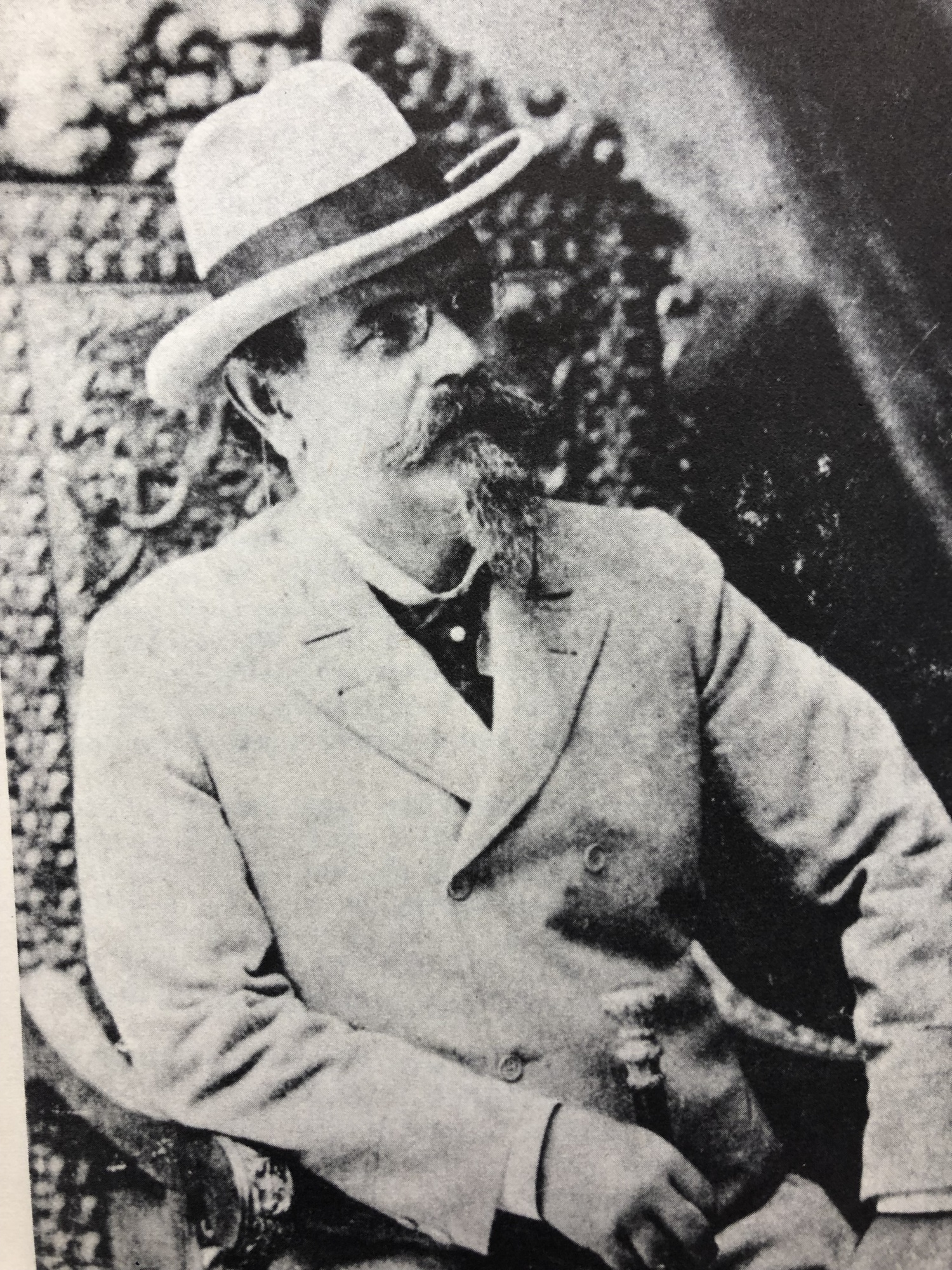
DEMENS AVENUE — Peter Demens (Piotr Alexewitch Dementief), of Russian aristocracy, came to Oakland after getting into the railroad business. Judge James Gamble Speer offered Demens, then president of the Orange Belt Railroad, land on which to bring the Orange Belt Railroad into Oakland. So Demens did. In 1887, a meeting of incorporation was called and 31 qualified voters showed up from the proposed corporate limits. Demens was one of them and was voted 24-2 as Oakland’s first mayor.
VANDERMEER AVENUE — It is suggested that this street was named for Jacob Vander Meer, a World War II veteran and an elder at Oakland Presbyterian Church who later moved to Clermont and opened a real-estate office. He died in 2015.
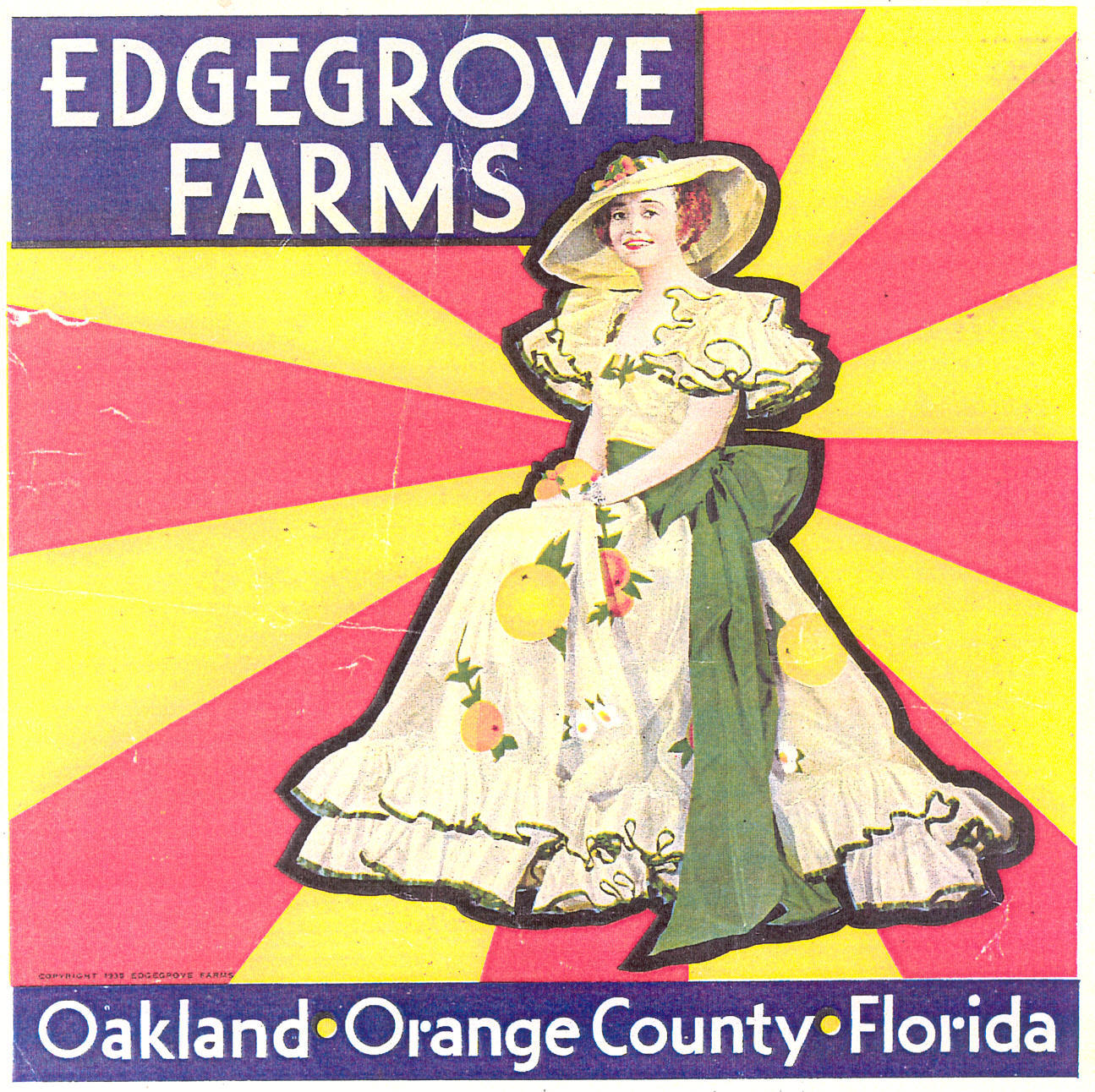
EDGEGROVE LANE — Edgegrove Farms was the name of the estate owned by Charles Frederic and Grace Mather-Smith. Charles, who made his fortune manufacturing paper, and Grace moved to Oakland in 1910 and started buying property in the town. They amassed a large property along Fourth/Tubb Street that ran north to the shores of Lake Apopka and built their home, a 28-room mansion, there. Edgegrove became the social hub of Central Florida, with boating parties, card parties, dances and buffets. The couple owned an orange grove and had a bright label designed for their packing crates. Grace posted for the photograph on the label, wearing a citrus-bedecked dress designed and made in New York City.
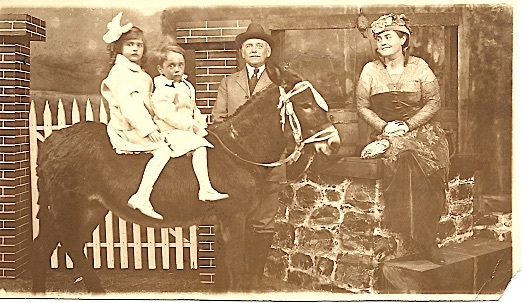
MATHER-SMITH DRIVE — Charles Frederic and Grace Mather-Smith came to the quiet town of Oakland from Chicago in 1910 and caused quite a stir in the community. Used to the big-city social life, Grace, a dancer and stage actress, became bored and livened up the town with her generosity and love of life. She and her husband built the original West Orange Country Club — on what is now Tucker Ranch — so she could hold social events. She shocked the women of the Oakland Sewing Circle by demonstrating the Turkey Trot. The couple sponsored a beautification program in downtown Oakland. Grace Park is located west of Tubb Street near the Arts & Heritage Center at Oakland currently under construction. There were two circular pools with fountains, flowering vines on trellises, benches and a 12-column pergola with a latticed roof in the center. A few pillars and remnants of the pools are all that remain of Grace Park. Charles died in 1941, and Grace died on New Year’s Day 1962. They were buried in a carved pink marble mausoleum on their property. It was vandalized in 1968, and the family had the bodies and pink markers moved to the Oakland Cemetery.
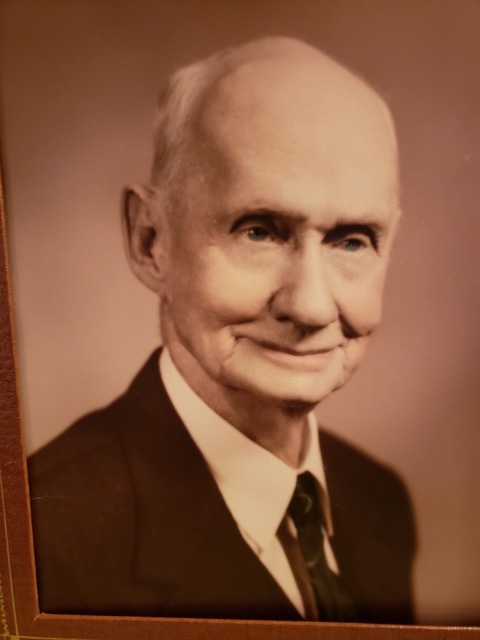
J.W. JONES ROAD — After J.W. “Sawgrass” Jones’ wife died in 1915, he moved his family from Zellwood to the Killarney/Oakland area. He bought acreage that spanned from south Lake Apopka into Lake County west and further south including Deer Island and around part of north John’s Lake in hopes of finding a better soil conducive to growing fruit trees. He quickly learned that Deer Island was an ideal location. Surrounded by water and with a small lake, Deer Island proved to be frost-free and perfect for growing a variety of delicate fancy fruit. He set out to cultivate and planted a grove with varieties of fancy fruits that were cold sensitive. To enhance the further development of citrus, he became involved with other growers to promote the area’s fruit sales to the north. He served as a director of the T&G Railroad and established the first post office on Old Highway 50 in Killarney in his general store (J.W. Jones Gen. Store), where his granddaughter, Gloria Pearce, served as postmaster. The concrete foundation is still there, just east of the current J.W. Jones Road, where farmers park and sell their produce. Years ago, J.W. gave his daughter property near Deer Island, and she later sold it for $1 so Highway 50 (West Colonial Drive) could be constructed. Descendants of J.W. Jones still live in the area.
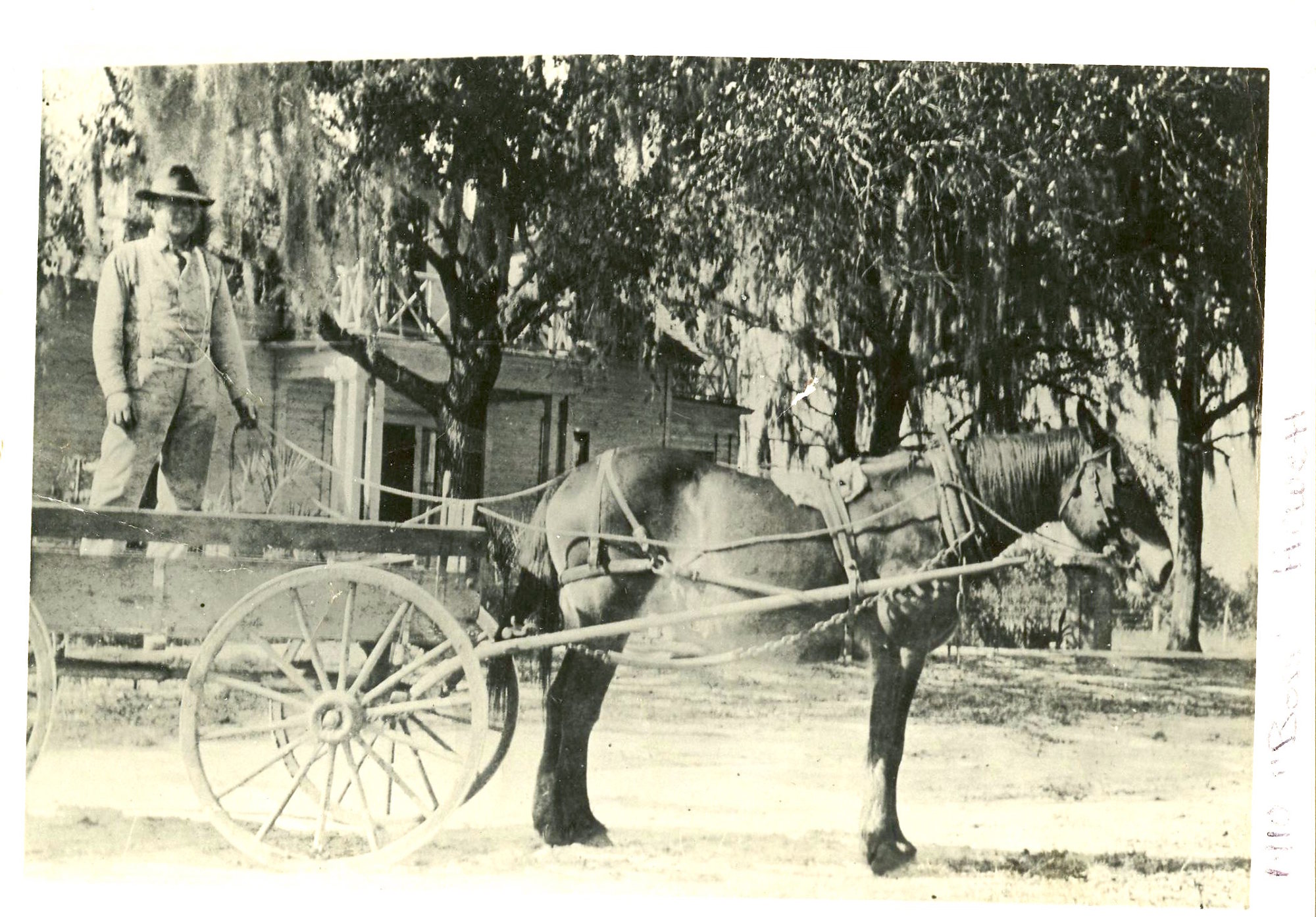
BOSS HEWETT — Austin Rockwell “Boss” Hewett and his wife, Dorcas Ann, purchased land in 1905 on which to build their home. The fifth generation of family lives in the house today. Boss’ vegetable farm, and, later an orange grove, was located on the land where the Florida Turnpike passes under Oakland Avenue. The family story is that Boss got his nickname because he was “the boss of the cabbage patch.” The Hewetts had five children and named their last child Frederick Mathersmith, after Frederic and Grace Mather-Smith, who had no sons and gave the Hewetts a chunk of adjacent land because they gave birth to a boy.
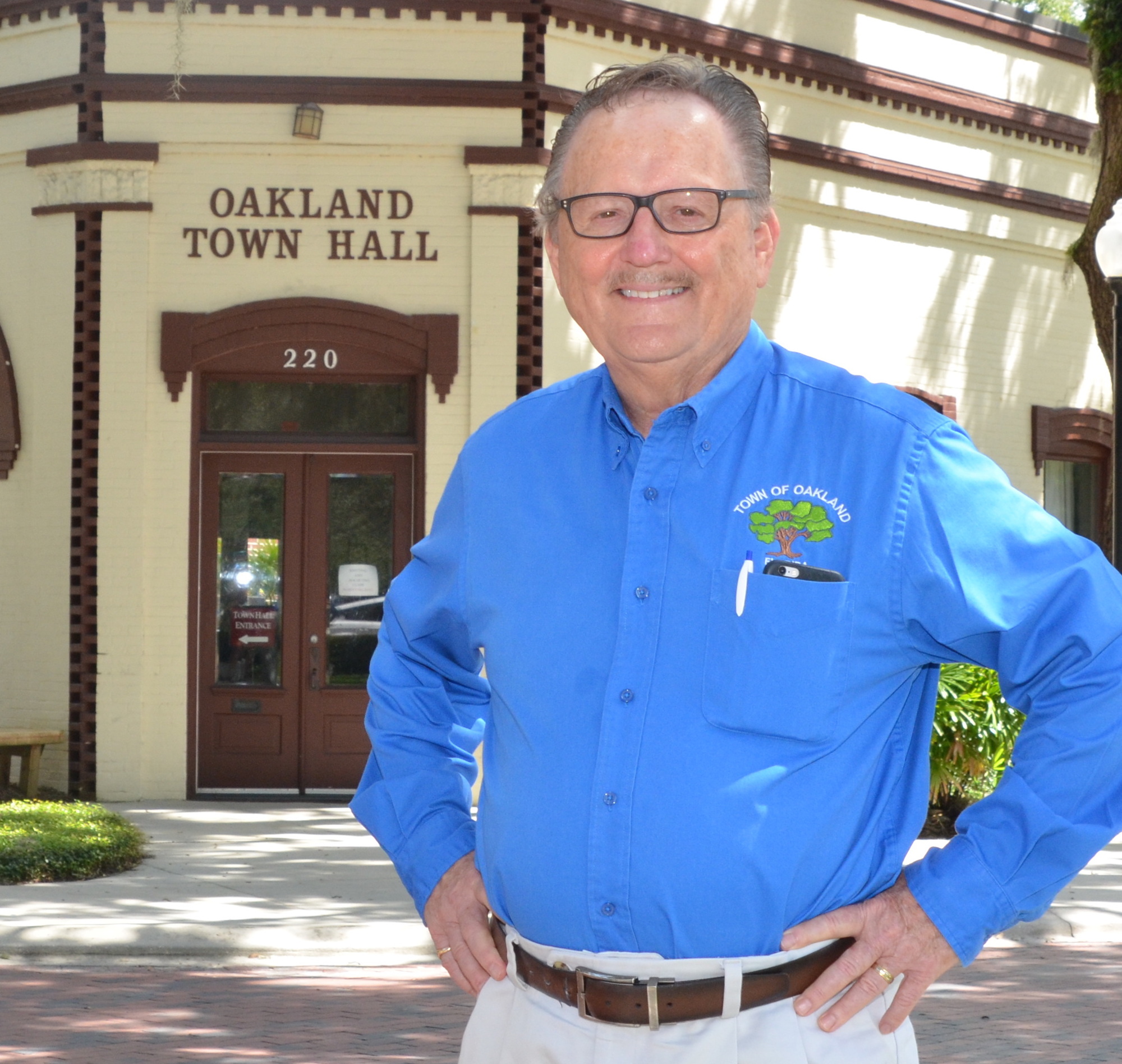
DENNIS FOLTZ — Dennis Foltz served as Oakland’s town manager from 2009-18. It originally was a three-month assignment to help the town take a fresh look at functions and organization that would benefit the municipality and its next full-time manager. Foltz has effectively managed the growth that took Oakland from a small town of 2,500 with no sewer system and few businesses to what it is now — a town on the edge of controlled growth with close to 3,100 residents. He developed department heads, streamlined operations and set standards and has readied the town of Oakland for the future. Foltz served on the board of directors for the Oakland Nature Preserve, as well.

HULL ISLAND, HULL ISLAND DRIVE, SIMEON ROAD and HULL ISLAND ESTATES — Simeon Benjamin Hull was the son of early Orlando pioneers William Benjamin and Emily Hull. Simeon met Marguerite Matilda Winkelman, the daughter of Oakland pioneer John Winkelman, at Orlando's Church and Home Hospital, where she was a nurse. The couple married in 1900 and moved to Winter Garden in 1906 to live in her parents’ home. The Hulls later constructed a new home on purchased grove land west of Oakland, in an area now called Hull Island. This home remains standing today, though the citrus groves are gone and the land has been sold and developed. Simeon and Marguerite had six children, including son Horace Simeon Hull Sr. His son, Horace Simeon “Buck” Hull Jr., served Oakland for more than 10 years as a town commissioner and the mayor. Descendants of Simeon Benjamin Hull still live in the Oakland area.
The Winter Garden Heritage Foundation has in its collection files of many of West Orange County's families past and present, and much of this information came from the history center.